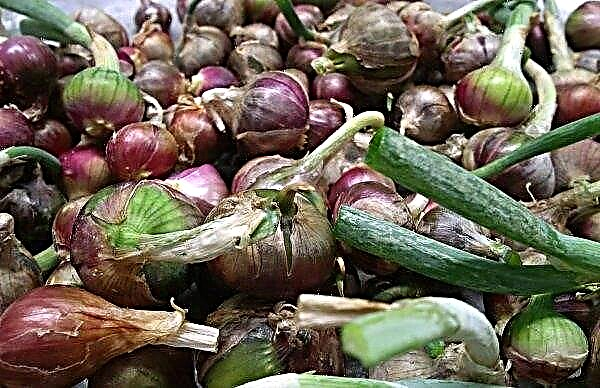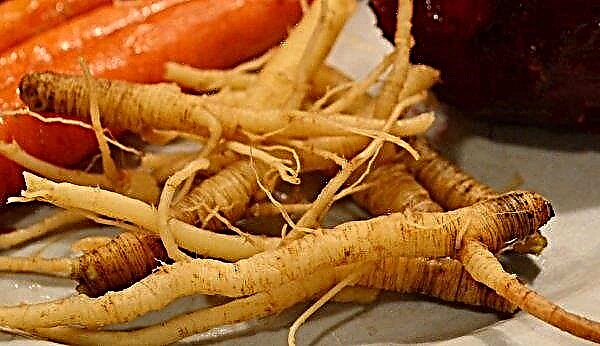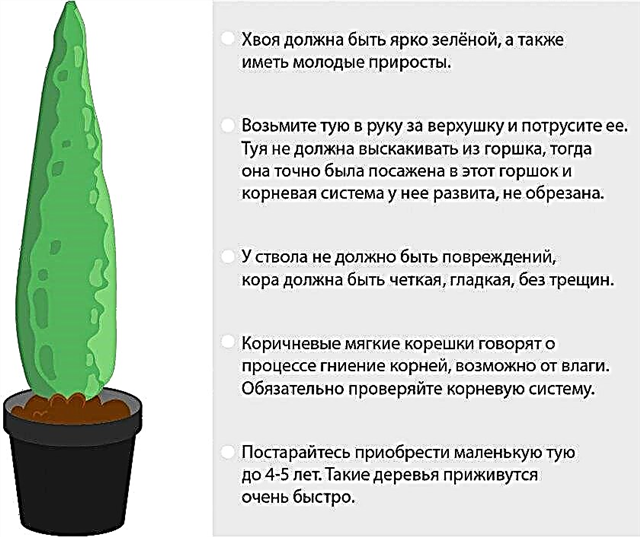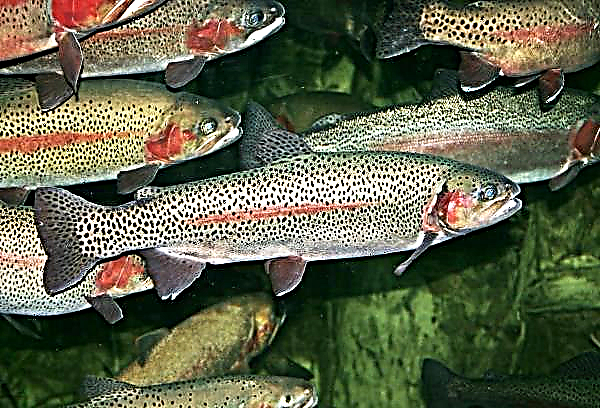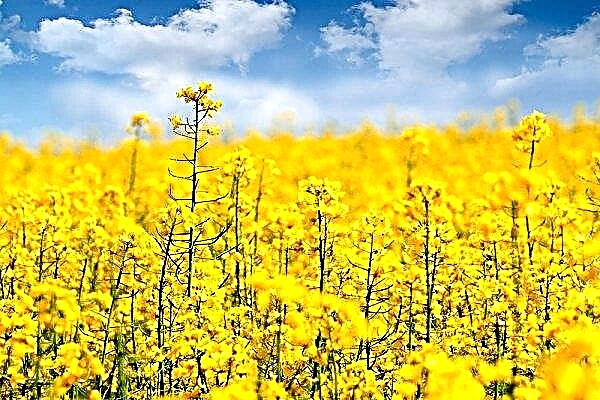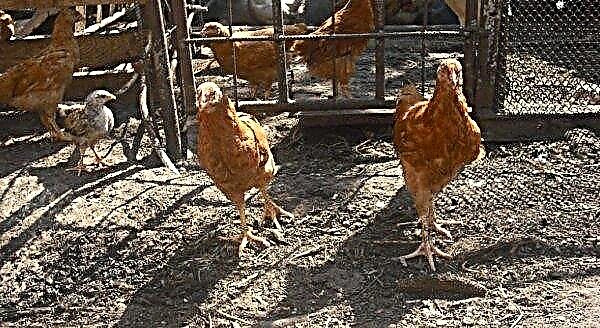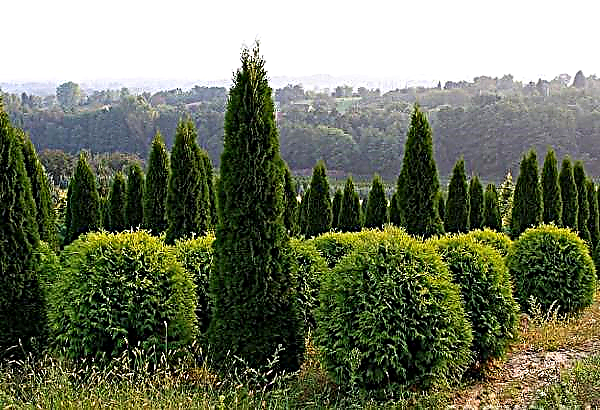Blood red geranium is known not only for its beautiful appearance, but also for its healing properties. If you decide to decorate your house or land by planting this plant, you must definitely study its features of planting, care and reproduction.
Botanical description of the plant
Blood red geranium belongs to the Geranium family. This is a perennial plant, characterized by reddening of the stem and leaves in winter, which is why this geranium is called blood-red. Flowering occurs in the summer, while single flowers of a pink-raspberry hue bloom that stay on the stem for 7 to 12 days.
Did you know? The first mention of blood red geranium dates back to the XYI century.
| Root system | Rhizome long, knobby |
| Stem | Branched, forked, covered with pile, in height from 20 to 60 cm |
| Leaf shape | Divided into 5-7 lobules, each of which is also divided into 3-5 parts |
| Leaf color | Green |
| Flower shape | Consist of 5 petals, diameter up to 4 cm |
| Flower color | The color depends on the variety, mainly pink shades |
| Fetal shape | Crane-shaped beak, contains seeds |
| Fruit color | Brown |
| The taste of the fruit | Does not differ |

Common varieties
From this type of geranium, many varieties were bred that differ from each other in flower color and size.
Did you know? The official name of the flower is Geranium sanguineum, the second Russian name for geranium - pelargonium, and popularly, the plant also has the name "crane" for the shape of the fruit.
Below is a list of the most common ones:
- Striatum, another name is Lancastriense. It differs in small height in comparison with other varieties, since it grows up to 10 cm. The flowers are pink in color, the petals are light at the edges, dark in the center.
- Prostratum. The bush grows to 15 cm. The flowers have a pink color of a dark shade.
- Compactum The height of the plant, according to various sources, can be from 10 to 20 cm. Petals of flowers have a light pink color and veins of a darker shade.
- Alan Bloom. This variety grows to 15 cm in height, the flowers are pink in color.
- Apfelblute. The height of the bush is on average 15 cm. Literally, the name is translated from German as "apple tree color" - the variety received this name because of light pink flowers with dark veins that resemble an apple blossom.
- Nana The plant grows up to 15 cm. Flowers of geraniums of this variety have a bright shade of pink.
- Canon Miles The height of this variety is on average 15 cm. Petals are pink, closer to lilac. On the flowers there are streaks of dark color.
- Ankum’s Pride. The bush has a height of up to 20 cm. The variety can be distinguished by the crimson hue of the flowers. Also on the petals you can see veins of a dark color.
- Elke In appearance, the variety is similar to the previous one, since it has similar dimensions (height 20 cm) and color (raspberry).
- John Elsley The bush grows to 20 cm. Petals of flowers are painted in a dark shade of pink.
- Max Frei. The popular Max Fry variety usually grows up to 20 cm and is distinguished by pink flowers with veins of a dark pink hue.
- Belle of Herterton. This species is slightly higher than the previous ones - the average height is 25 cm. The flowers have pink petals with dark veins.
- Inverness In height, the variety grows up to 25 cm and is characterized by pink flowering.
- New Hampshire Purple. The plant usually grows to 25 cm. Petals have a purple hue, as indicated by the name of the variety.
- Nyewood. Variety "Nywood" has a height of approximately 25 cm, flowering pink.
- Album. Translated from Latin, the name means "white", which indicates the color of the petals. In addition to snow-white flowers, the plant of this variety has a large height compared to previous ones (up to 30 cm).
- Glenluce. The bushes grow up to 30 cm. The flowers are pink in color with a light shade with veins slightly darker.

















Necessary conditions and care
This type of geranium belongs to fairly unpretentious plants. In caring for him, you need to adhere to some rules, however this will not be a big difficulty.
Seat selection
To place a flowerpot with a plant, it is better to choose a spacious, lit place. Drafts and open winds must be avoided. An optimal room may be a glazed loggia or a room with large windows facing south.
Temperature and humidity
For blood-red geraniums, a special microclimate is not needed. The plant is best kept at normal room humidity (60%) and temperature (+18 ... + 20 ° C). It is important that the temperature does not fall below +12 ° C.
Watering and spraying
The frequency of hydration depends on the season. So, in the period after planting and in the hot season, the plant needs frequent watering, during cold weather and with high humidity, the flow of moisture can be reduced. It is imperative to keep a balance: an overabundance and a lack of water can harm.
Important! It is advisable not to use hard water when watering, as it can harm the plant.
Water should be at room temperature. For unpretentious blood-red geraniums, a manual type of watering is quite suitable.
Top dressing
Fertilizer should be carried out in the spring. Top dressing is important before entering the growing season and flowering. Fertilizing with organic matter is highly undesirable. For feeding, it is better to use mineral complex fertilizer.
Pruning
Pruning the plant is very necessary to make room for new shoots. Winter pruning is carried out after flowering, this period falls on September-December. It is necessary to remove faded inflorescences and dry leaves, shorten the main stem by a third, so that the plant can winter and gain strength.
In late winter - early spring, formative pruning is performed. However, you should not be zealous, because the flower will need strength to recover. This pruning is designed to enable the plant to bloom magnificently.
In summer, geranium should be regularly rid of dried leaves and stems.
Transfer
The plant can continue to live without transplantation, but it is better to produce it as it grows. The best period for the procedure is the end of winter and the first months of spring. You can transplant geraniums every year or less.
The soil must be chosen loose and light. The pot should be slightly larger than the previous one, but too spacious containers should be avoided. Transplantation should occur according to the following instructions:
Transplantation should occur according to the following instructions:
- Moisten the soil in an old pot.
- Disinfect the new container.
- Pour a layer of drainage to the bottom.
- Carefully remove the plant with the root and reposition it in a new pot.
- Fill in new soil and compact.
- Pour the flowerpot.
If possible, it is recommended to plant geranium in the open ground for the summer and transplant it back into the pot before the onset of cold weather.
Features of planting and care in the open ground
Blood-red geraniums are conveniently grown in open areas.
In addition to the fact that the flower is beautiful, care for it is only a few points:
- for planting, select a place with loose soil such as loam and sandstone;
- Initially, it is better to plant individual seedlings at a distance of half a meter from each other;
- try not to allow waterlogging of the soil;
- weeding is necessary only during the period of plant adaptation in a new territory;
- shoots should be cut before frosts; other types of preparation for the winter season are not needed;
- when the bush grows noticeably, it needs to be divided.
Breeding
Blood-red geraniums can propagate by seed or division of rhizomes.
Seeds
Seed propagation is preferably carried out before the onset of winter frost or in early spring (March-April). In this case, the first shoots will sprout in late spring. Flowering is expected next year.
Rhizome division
Rhizome division, or vegetative propagation, is resorted to either in early spring, or in late summer or early fall, when the plant fades. The rhizome is divided so that each part has one kidney, and then planted in the ground.
Important! Rhizome division is more optimal for varietal forms than the seed method.
Medicinal properties and contraindications
In folk medicine, blood-red geraniums are used as a medicine to treat many diseases.
Among the therapeutic effects can be identified:
- sedative;
- antiseptic;
- painkiller;
- hemostatic;
- anti-inflammatory;
- astringent;
- dissolving salt deposits.
 The range of diseases for the treatment of which traditional doctors recommend the use of drugs based on this plant is extensive.
The range of diseases for the treatment of which traditional doctors recommend the use of drugs based on this plant is extensive.Important! Before using the product according to any of the popular recipes, consult your doctor. Remember that self-medication can be harmful.
These include:
- bleeding (internal, nasal, uterine);
- wounds and ulcers on the skin and mucous membranes;
- ulcers;
- Depression
- schizophrenia;
- insomnia
- salt deposits;
- fractures
- tonsillitis;
- tonsillitis;
- gum bleeding;
- hair loss;
- stones in the kidneys;
- gout
- rheumatism.
 Contraindications to the use of this plant for medical purposes include:
Contraindications to the use of this plant for medical purposes include:- allergic to components;
- increased thrombosis, thrombophlebitis, thrombosis;
- atonic constipation;
- gastritis with high acidity;
- stomach ulcer.
Application in traditional medicine: recipes
There are many recipes with blood red geraniums as an ingredient. For medicinal purposes, leaves, flowers and roots are used, most often in dried form.
Alcohol universal tincture
Ingredients:
- dried geranium - 6 tbsp. l .;
- vodka - 200 ml.
Cooking method.
- Pour the dried plant with vodka.
- Insist for 7 days.
- Strain the infusion.
For medicinal purposes, dilute 1 part of the medicine with 4 parts of water. It is used as a universal remedy for various diseases. Universal infusion on the water
Universal infusion on the water
Ingredients:
- dried geranium - 8 tbsp. l .;
- water - 1 l.
Cooking method.
- Boil water.
- Add the dried plant.
- Boil for 1 min.
- Insist 30 minutes. under a covered lid, you can additionally wrap the container with a towel.
- Strain the infusion.
For the treatment of various diseases, the medicine should be taken after eating 3 times a day for 1 tbsp. l
Infusion against allergic dermatitis
Ingredients:
- dried root - 1 tsp;
- water - 200 ml.
Cooking method.
- Pour the root with cold water.
- Infuse the mixture for 8 hours.
- Strain.
 With this tool for allergic dermatitis, the skin is treated in affected areas.
With this tool for allergic dermatitis, the skin is treated in affected areas.Blood-red geranium is a beautiful medicinal plant that combines beautiful flowering and unpretentiousness. The right care flower will be an exquisite decoration for your home or garden.





